The Amish of Parke County, Indiana (24 Photos)
This year marks the 30th anniversary of the founding of an unusual (at least at the time) Amish settlement in Indiana. In December of 1991, two Amish families departed Lancaster County for their new home 700 miles away in the Hoosier State. New settlements were less common then than they are today, and Lancaster Amish had rarely moved outside the state to form new communities. Such a move was rare if not unprecedented at the time for Lancaster people.
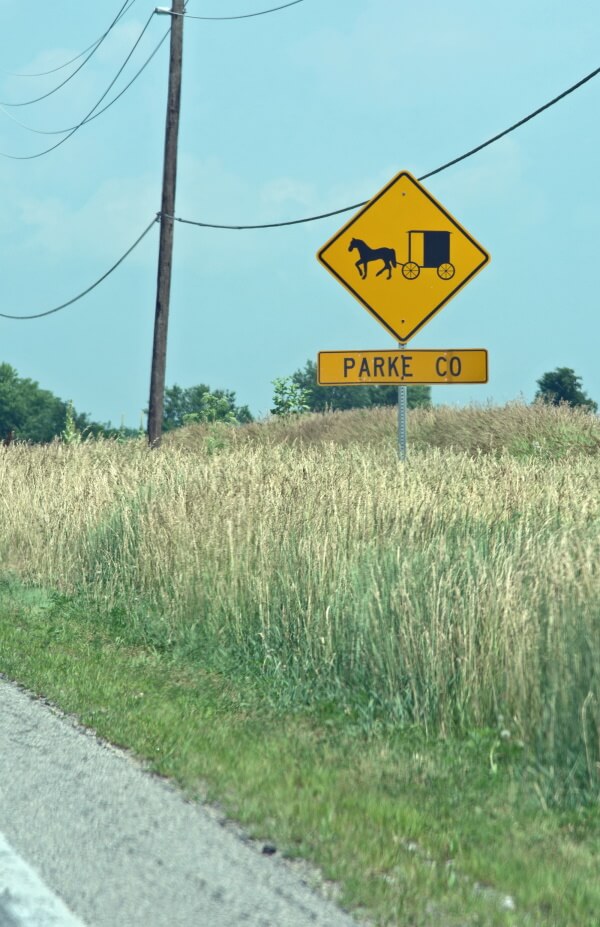
Steven Nolt and Thomas Meyers tell the story of the Parke County community’s founding in their excellent book on Indiana Amish, Plain Diversity: Amish Cultures and Identities. Why did they decide to move, and so far away? Several things motivated them: “Chief among these was a desire for available, affordable farmland” according to Nolt and Meyers. That motive would ring true with the Lancaster Amish of today, where land has not gotten any cheaper, nor more plentiful.
Other factors included congestion in increasingly-populated Lancaster County (though I imagine the Lancaster County of 1991 would appear downright sleepy to residents of the county today) and zoning restrictions which made life less convenient and more expensive. Amish also felt the Lancaster County settlement’s sheer size “militated against church unity and fellowship, and ran the risk of reducing Amish affiliation to a set of identifiable behaviors instead of a set of mutual relationships” (Plain Diversity p. 124).
The smaller size of the new community also meant youth activities being under the more watchful eye of adults compared to the larger home settlement, where the youth community naturally has its wilder elements (p. 124).
One other aspect is noteworthy. The Ordnung understanding that the new settlers came to included a prohibition on growing tobacco, a fairly common cash crop for Amish in Lancaster County, as well as prohibition of tobacco use. They also placed a limit on milking stanchions, to just 32. This would help limit the size of herds, and in turn keep the focus on family labor and away from mechanization (p. 125-6).
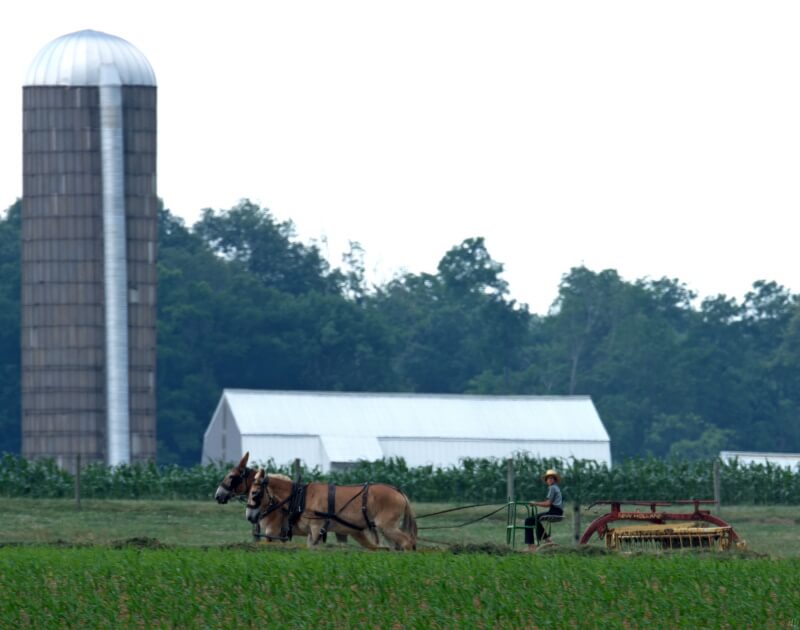
I was fortunate enough to pay a visit to this community way back in 2004, when I think it had around 5 or 6 church districts (today it has 10). It was immediately evident these were a different people from the Daviess County folk I had spent the previous weeks with. I don’t remember too much from that visit – meeting a farmer of few words; and then one talkative and friendly fellow who was originally from Geauga County…and of course the covered bridges.
Parke County claims the most of any county in the US with 31; number two would be Lancaster County, at 29. I’ve always wondered half-seriously (can you wonder half-seriously?) if that fact didn’t have its own subconscious pull as well. Or maybe the Amish had no idea about that until after they arrived. Still, I’ve always found it a charmingly odd – coincidence? – they ended up there, out of all of the thousands of counties in the US.
There are no covered bridge photos in the following selection from Don Burke – but we do get to see various views from around the Parke County settlement. I hope you enjoy this glimpse at the way these once-Lancaster-transplants (and I suppose now increasingly “native” Hoosiers) live.
First of all, this farm looks like it could be straight out of Lancaster County.

Laundry is out on the long pulley lines favored by Lancaster Amish:
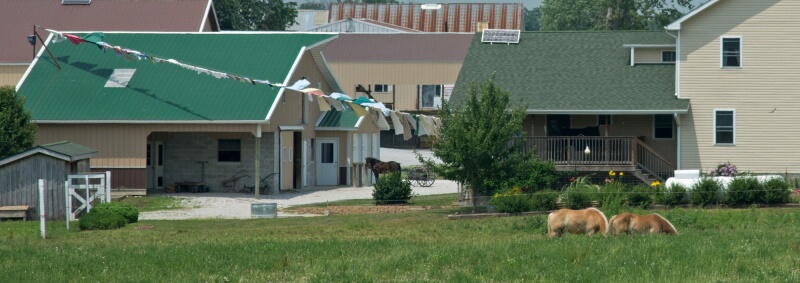
A solitary solar panel perches on the rooftop.
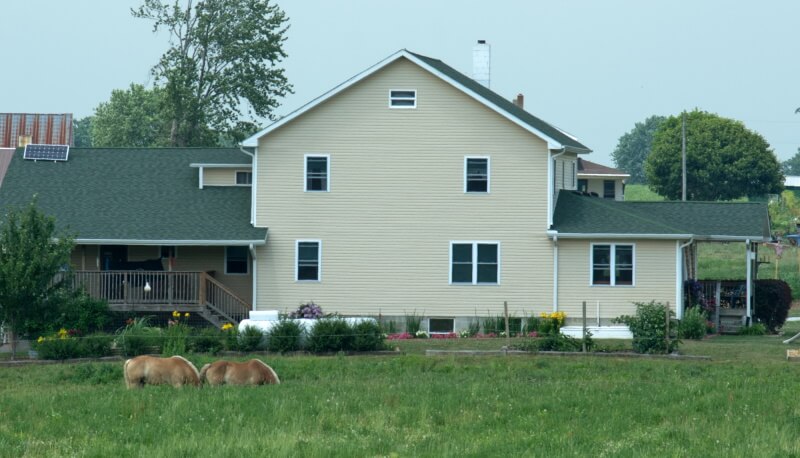
They weren’t the only families with laundry out that day.

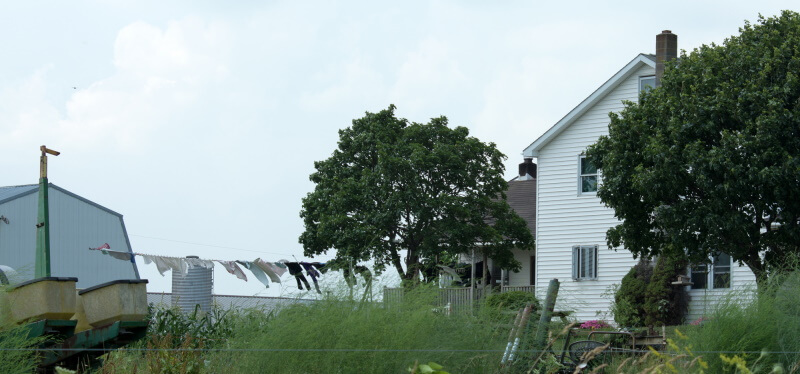
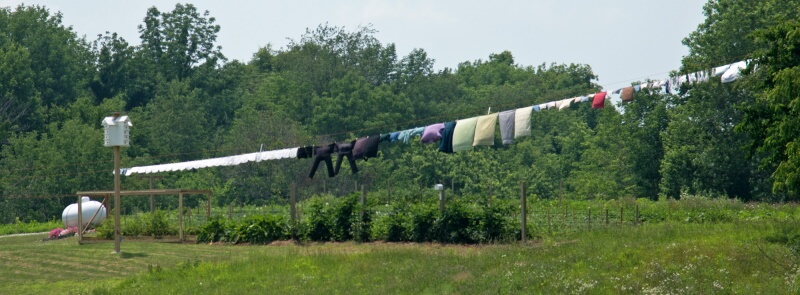
Another solar panel. They are used here as well as “back home” in Lancaster County.
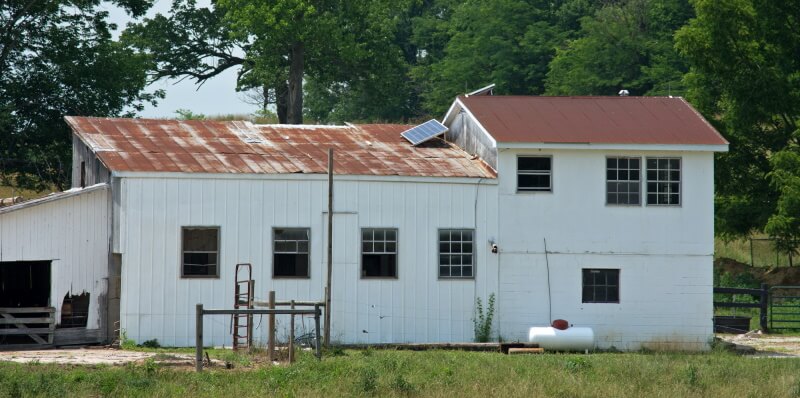
A school with horses grazing outside. Here’s another example of something like that in an Ohio community.
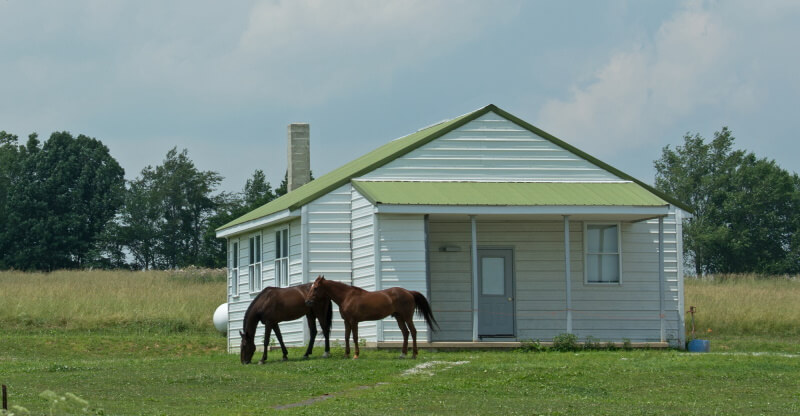
Let’s have a look at some of the community’s businesses:
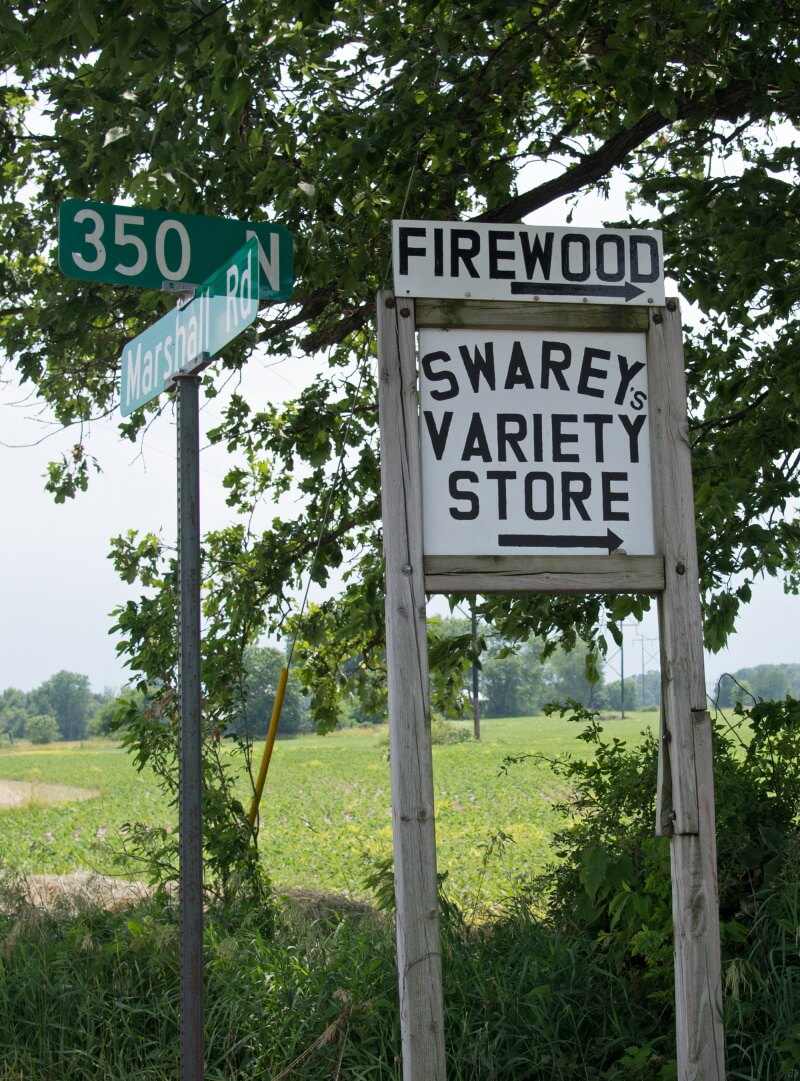
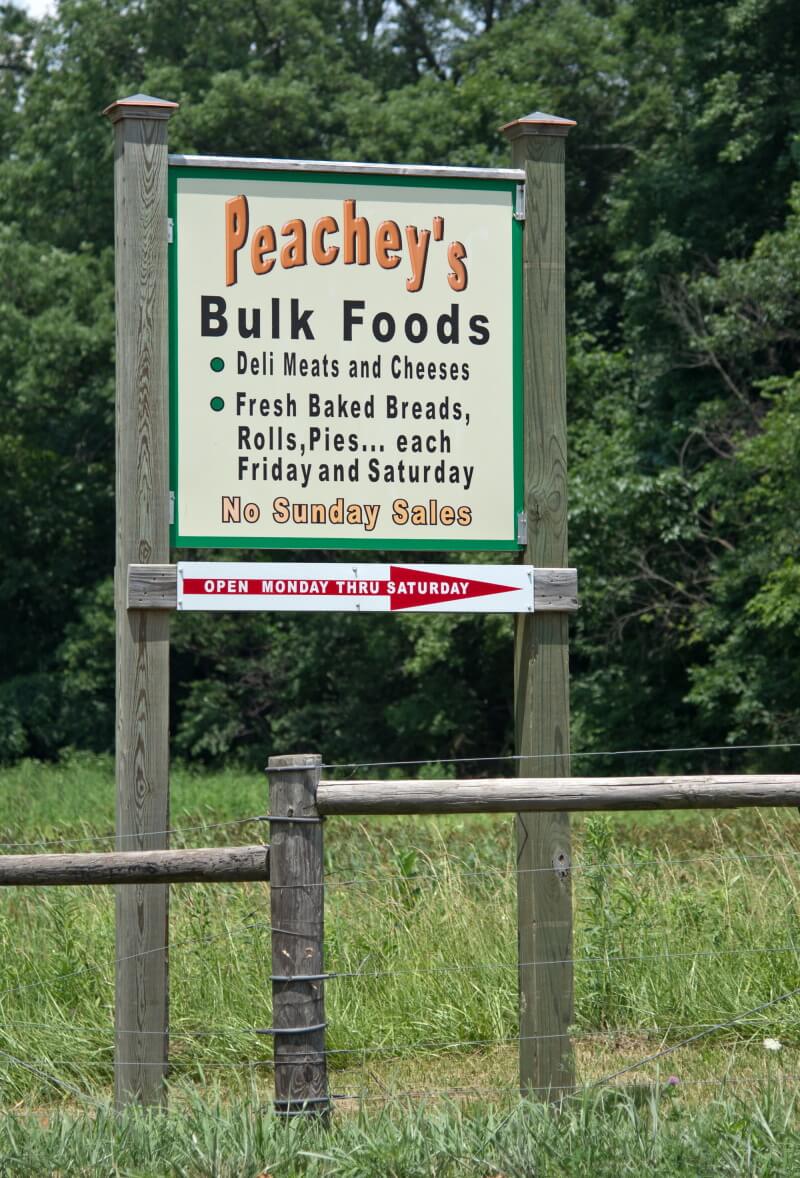
Every Amish community of some size needs a good bulk foods store.
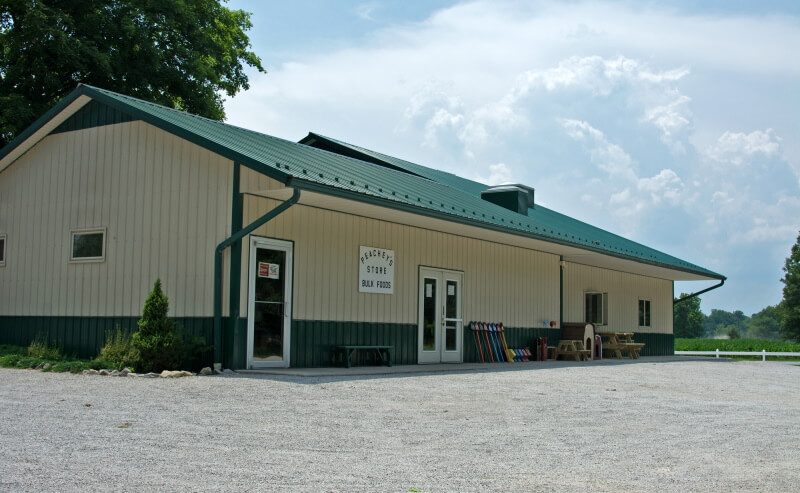
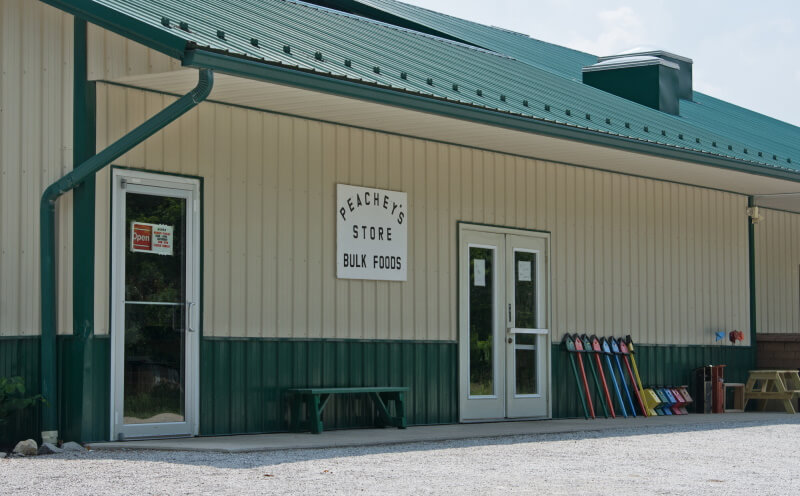
This way to the butcher shop and produce seller. If you were looking for the Amish, “No Sunday Business” lets you know you’re on the right track.
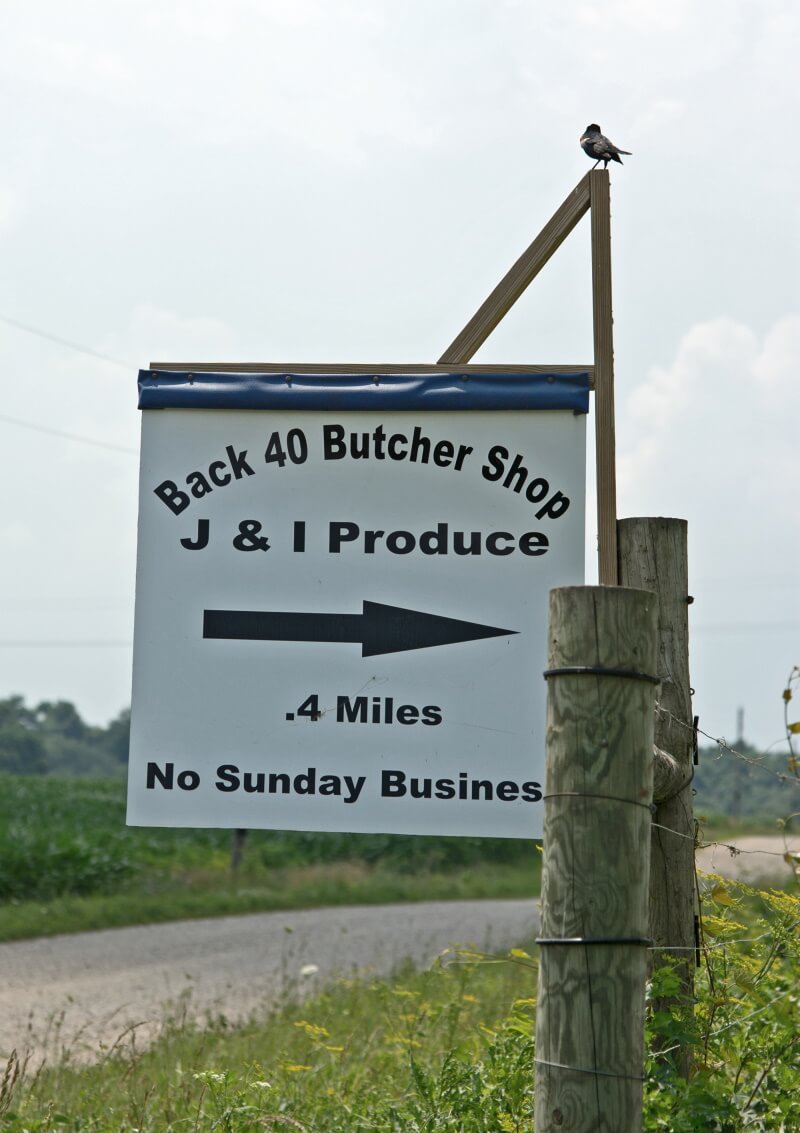
What I find odd about this sign is that they seemed to select especially “cute” photos to represent the animals they turn into meat products. Three of the four of them at least. I mean, really. That little piglet. Couldn’t you have picked meaner or uglier-looking shots? Still, can’t say I’d turn down the summer sausage or jerky.
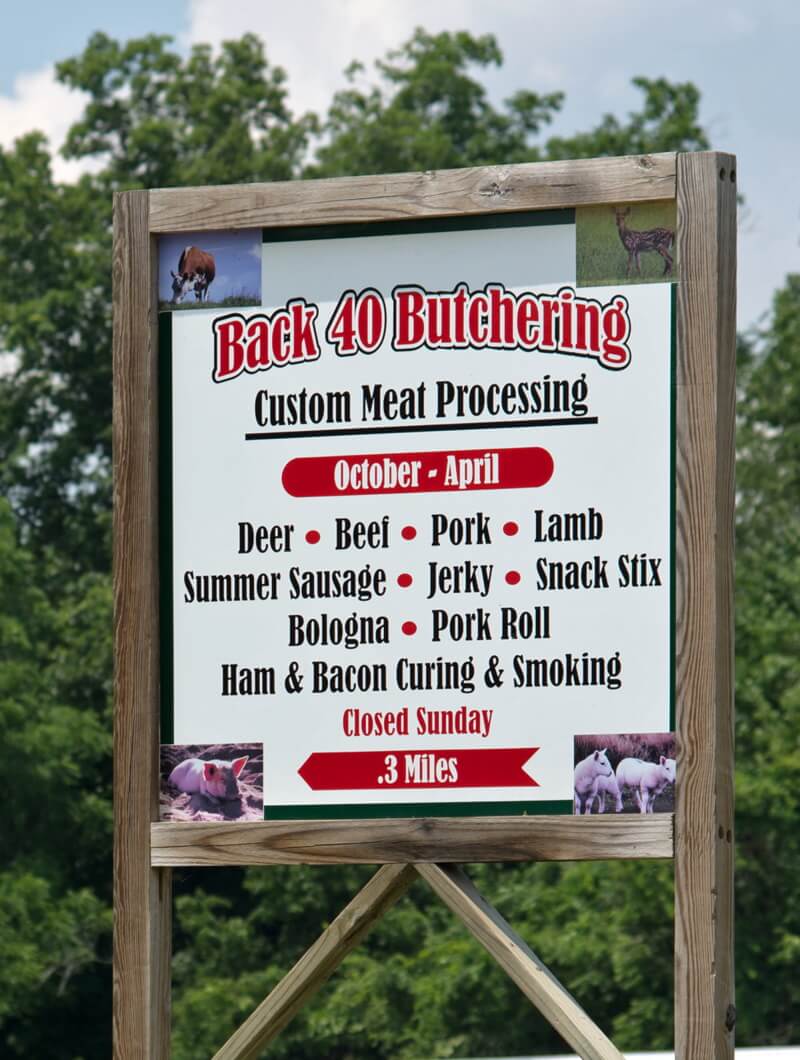
It might be hard to see the lettering, but this is a lumber business.
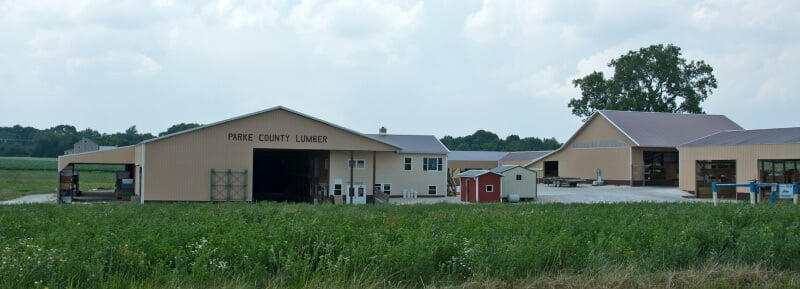
An Amishman and presumably two of his sons making hay in this nice sequence of photos:
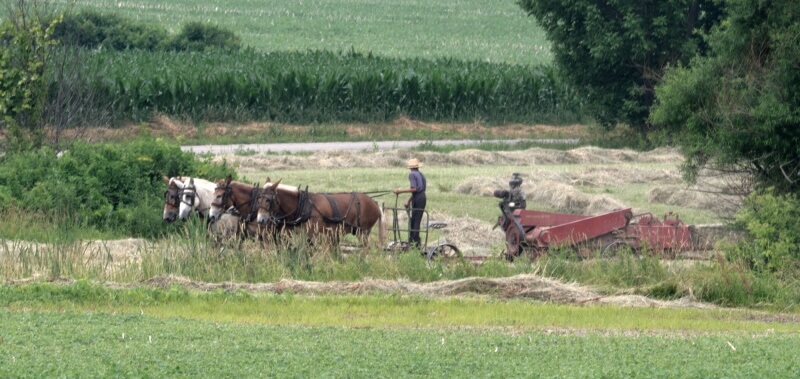
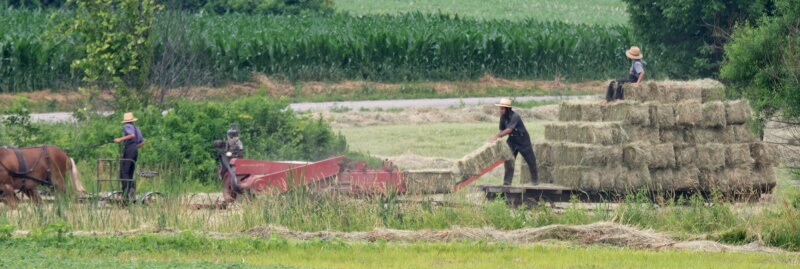
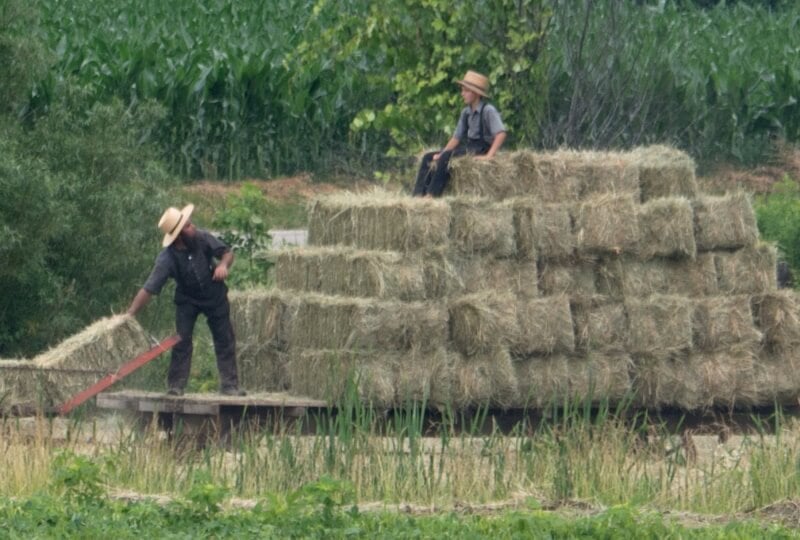
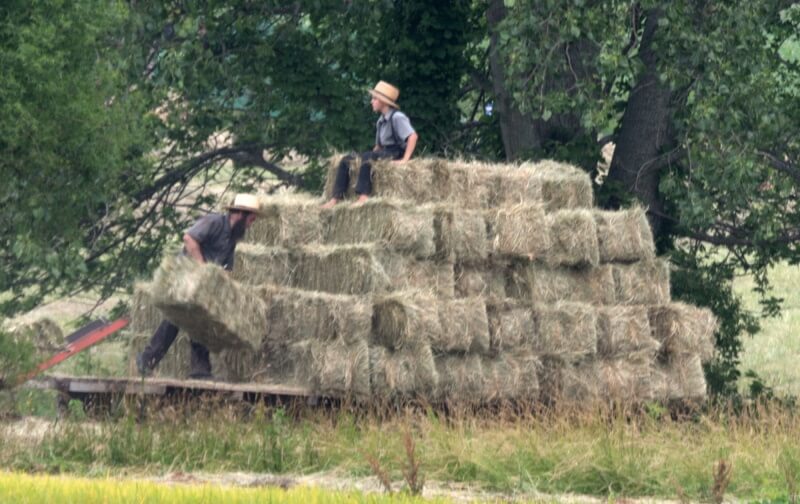
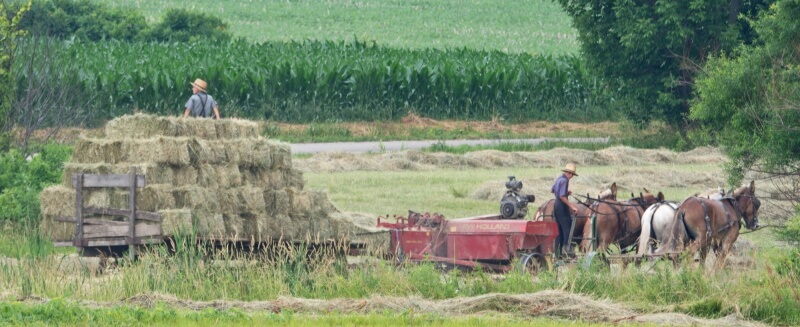
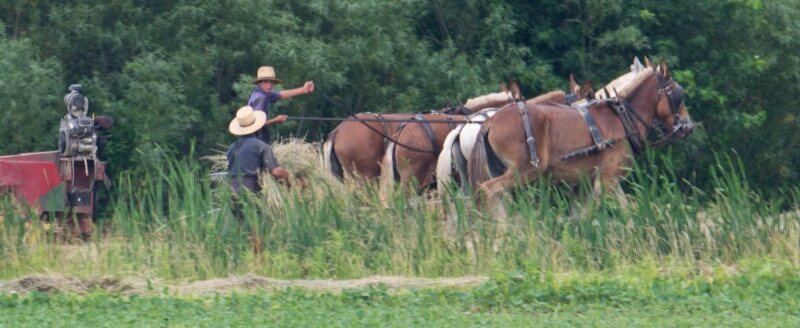
Finally…barefoot on the open road.
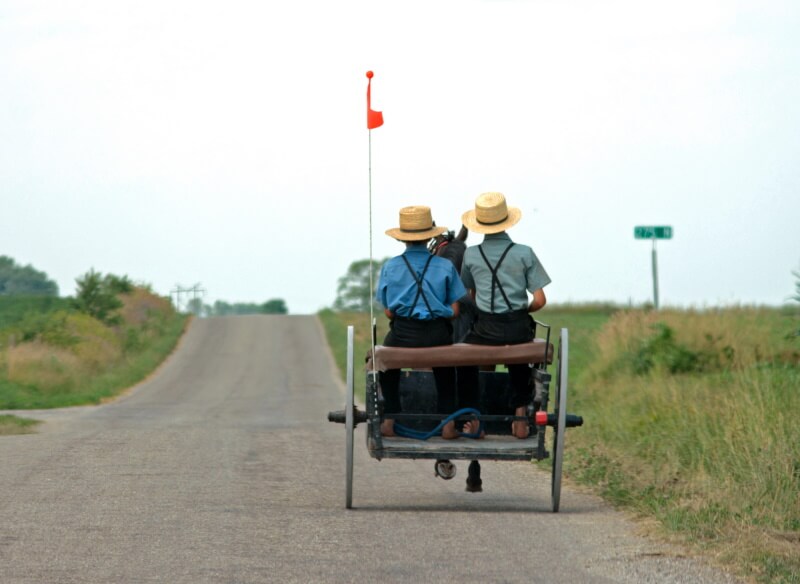
Thanks to Don for this look at the Parke County Amish. View more of Don’s Amish photos here.


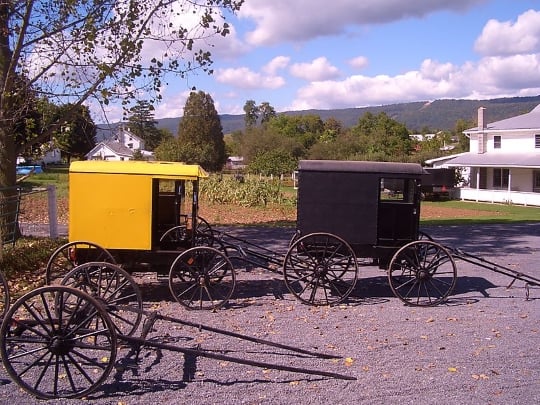



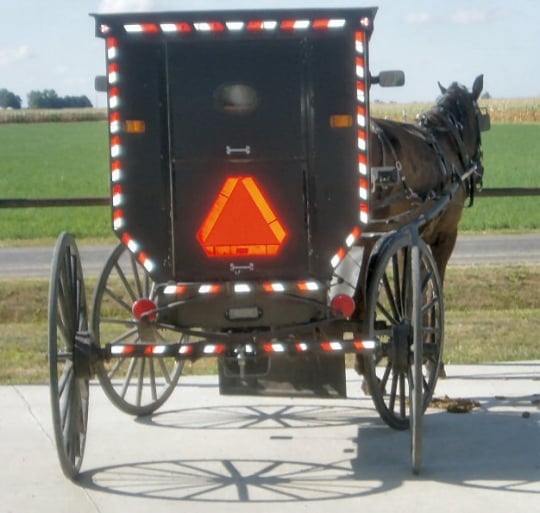
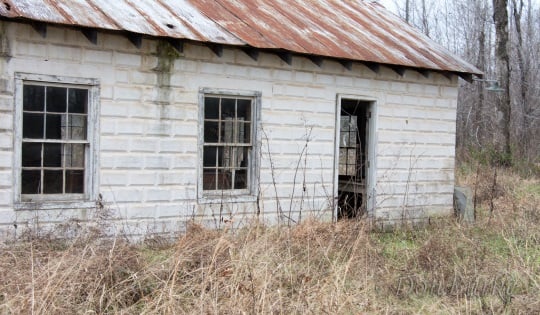
Transportation
What types of transportation are used to move from Pennsylvania to Ohio and Indiana or any other location to which the Amish might move? I think going by plane is very much frowned on isn’t it, however I have seen Amish people use trains to get to more distant places.
With more Amish people finding employment off the farm, I wonder why more families with craftsmen don’t pool their resources and find a small village to move to near other Amish people and create a town or village with little or no dependence on electricity that includes blacksmiths, millers, cobblers, saddle and harness makers, chandlers, bakers, etc. The effect would be kind of like an Amish Williamsburg, Virginia, but producing goods mainly for Amish uses as well as for the occasional tourists. I’m guessing that they might say there is too much pride involved in a venture like that (??).
I don’t have the info on this specific move but I would think this was land transport (trucks etc.) as Don suggests below, just for the convenience of it. I believe trains were more frequently used in the past though perhaps still may be in some cases. They don’t use air travel except for New Order Amish (though I do know one non-New Order Amishman who has flown, that wasn’t really in line with the church Ordnung though).
As far as the Amish village in the way you descrive, I can see how it would be interesting in a quaint way akin to the Williamsburg analogy you give but I don’t quite see the appeal for Amish, as they tend to like having a good bit of land (animals, gardens, etc). However you will in fact already find something like Amish “villages” or towns in some of the larger settlements where there are Amish actually living “in town” on smaller-land properties. Some of these may be older retired folks or families who don’t have the need for land. Examples of this are Topeka, Indiana and Mt. Hope, Ohio. Neat places, and there are other examples (though I’d note the population is not 100% Amish in these places, and not necessarily even close to that, but they still have the feel of a “Amish town”).
David, I can’t speak to this particular move here, but I am aware of a couple of move (one Amish, another horse-and-buggy Mennonites) that were accomplished by trailor-trucks (18-wheelers) — sometimes involving numerous trips.
You bring up an interesting question about the Amish-village — and to be honest, I am not the one to really field that question. But I would love to see Erik do (or at least consider) a post on the level of dependence that the Amish have on the English. The Amish are dependent upon the English for medical and many dental needs; services requiring higher levels of education and many form of certification would arguably not likely be available by the Amish themselves. And even Amish food and farm supply shops need English suppliers. For all that the Amish seem to be removed from general society in some ways, I’m inclined to think that they really are very dependent upon the English after all. And as such, I’m not sure how well they could pull off anything close to an Amish-only-businesses town.
Don that’s an interesting topic and while maybe not a perfect match I do have a couple in the ballpark of what you describe. The first one was a brief guest post by an Amish friend on the topic:
https://amishamerica.com/how-self-sufficient-are-the-amish/
https://amishamerica.com/5-non-amish-people-who-amish-depend-on/
Could be worth exploring further in a post/video.
Yes, that’s the kind of stuff I had in mind. Thanks, Erik.
Amish schools
Thanks Don, as I read your post I recalled another question I’ve had for a while: I know that many Amish kids go to their own parochial (often one room) school houses very often headed by a young Amish “schoolmarm”. My question is how do they get away with these “teachers” not having the teaching credentials to conduct a school or are certain young Amish women selected to go on with higher education including getting a BA/BS degree which would be enough to teach? Correct me if I’m mistaken, but I had thought that the Amish start their children as late as legally possible in a school system, skipping stuff like pre-school and kindergarten and continue only to the 8th grade, generally, quitting school as soon as legally possible. This might be another topic for Erik to investigate.
David, I’m afraid that I don’t know the “norms” in these kinds of situations; and I would expect that state regulations come into play on some of this, and that of course would cause variations from schools from one state to another. I do know that in some locations the Amish actually attend public schools and naturally the teachers there would be duly certified. And as far as I know the Amish do not have an formal education prior to 1st grade — but I take no issue with that since I didn’t have any prior to that myself, and as far as I know I’m none the worse for it. (ha) I do know a couple of Amish sisters that joint-taught in a one-room school, and I’m fairly confident that neither had more than their own 8th grade education. But it is my feel that Amish education of today is probably more like our own education a few generations back, and outside of more advanced subjects and technologies, I dare think that more is learned in their 8 shorter years than is typically learned in our “more advanced” 12+2.
Another question
When they move what do they do with their horses and other livestock? My guess is that they auction them off and the money earned from their sale simply goes into buying other livestock once they are established in their new farm.
Here again, I’m not very experienced on this subject either, so not sure I can help much. I would guess that how far they are moving would come into play — moving livestock an hour to a new location would seemingly be easier and likely cheaper than paying to truck them to the local sale barn, then paying someone else to truck a newly purchased replacements at the new location. And of course there is the commissions on sales that comes into play when selling the old herd and possibly also when buy the new livestock. I get the feeling that good buggy horses are not easy to pick up just anywhere, and not just everywhere has draft horses readily available, so certain of the livestock might be kept where others are sold. Plus, if there is multiple families moving at the same time from Place A to Place B, they could double-up on livestock shipping. But most of this is just speculations, and not based on what I’ve seen or heard.
That’s right, in fact here is an example of moving sale: https://amishamerica.com/rudy-gingerich-auction-hazleton-iowa/
Parke county
Parke county was a great fit for the Amish no zoning you could build any kind of house you wanted to. Rolling farm ground and woods with a lot of small fields and inexpensive compared to other parts of Indiana. Also not a large population density so a lot of quiet backroads.
I do business with several families and everybody seems to be doing quite well And expanding in numbers.
Not all of them settled out of Lancaster county but I’m pretty sure all are from Pennsylvania.
Great History and Photographs of Parke County, Illinois Amish Settlement.
Dear Erik and Dan,
Thank you for a very informative history and equally informative photographs of this community. Yes, I have read Steven Nolt’s and Thomas Meyers’s excellent book, Plain Diversity, but that was some time ago. How timely of you to do this photo essay on the Parke County community, thirty years after its founding. I am reminded of the first community founded by a group from among the Old Order Mennonites in Waterloo County, Ontario, Canada, for many of the same reasons. Thank you for listing the reasons, and, most interestingly, the subsequent changes to their Ordnung. Erik, would you please confirm for me that the Parke County community and their parent Lancaster County communities continue to be in full fellowship, in spite of the differences in their respective communities’ Ordnungs? The two of you are a great team. Please continue to collaborate. Keep up the good work.
Sincerely,
Larry Clarence Lewis,
Canada.
Larry, please forgive the delay in response — I thought I had posted a reply, but guess there was a hiccup on my part.
Thank you for your kind compliments. It is a pleasure to have the opportunity to collaborate with Erik from time to time — I provide him with a few random snapshots and he works up a very informative post from them. I hope that the future will give even more opportunities to continue to do features like this.
Amish moving
I recently observed an Amish family move from Geauga County OH to Barry County MI. A livestock truck was hired to move the family farm animals (chickens, cows, goats, etc.). A semitrailer was parked in the driveway for several days as they loaded up the furniture & household. The semi truck hauled the household furniture and belongings to MI. Finally, a regular Amish taxi moved the entire family. I spoke with my Amish friend after the move and he said that all went well.
Transportation
They apparently have no objection to using the internal combustion engine to haul things a longer distance and an “Amish taxi” for transporting themselves; I wonder what kind of rules/regulations apply in the case of Swartzentruber Amish people moving? What would be the rules of the Ordnung for any Amish people on having an auction right on the farm to be sold, first auctioning off the livestock, then the furniture and finally the house and land? If families were relocating far away, perhaps from Pennsylvania to Kansas for example, having the money to get started in the new location seems to make more sense. The Amish seem to have no objection to taking the train, I wonder how many have done it that way when moving, then hiring someone to take them from the train station to their new farm? Here in San Diego, I have seen Amish people in the train station downtown, although there are no Amish congregations in California that I know of. Many Amish come to Tijuana for cheaper medical/dental care; there are numerous herbalist practitioners in Tijuana as well which the Amish tend to prefer as I understand.
I have visited the Parke County Amish community several times in recent years. I think the community covers a small area of Montgomery Co. also.
Very nice homesteads. Peachey’s Bulk Foods has moved from Mullwood Road northeast of town to 2660 Hwy 41 southwest of town and now is called “JayTee’s Country Market” (named after the owners Jacob & Thelma). Very good products and reasonable prices.
The Parke County Covered Bridge Festival (in Oct.) is very enjoyable, but when I went several years ago there was a huge crowd and I went back again to Parke Co. another time to visit the Amish stores. The Visitor’s Center in Rockville has a map of where the covered bridges are located and a person can visit them at a time other than the festival time.